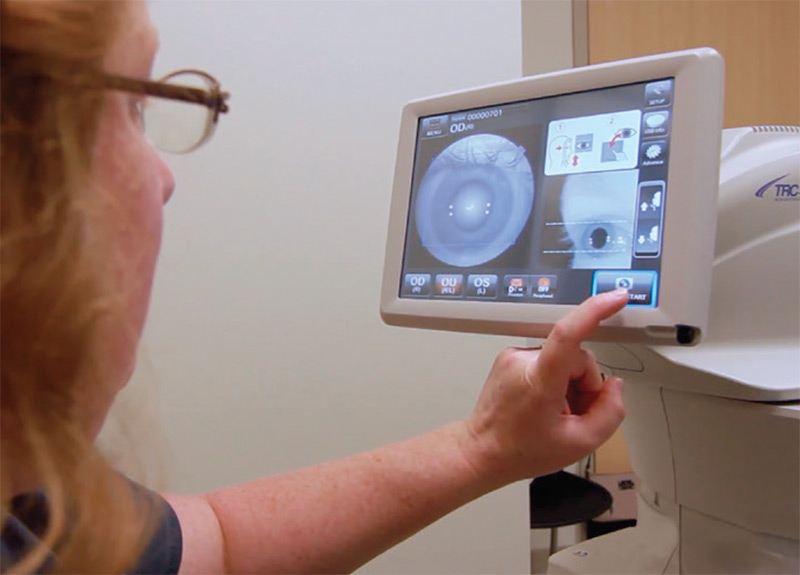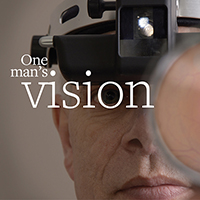More than 24,000 people in the United States lose their sight to diabetic retinopathy each year. It is the leading cause of vision loss in adults and one of the most severe complications for the 30.3 million Americans with diabetes. Yet less than 50 percent of patients with diabetes schedule regular exams with an eye-care specialist, and in a rural state like Iowa, a qualified vision specialist may be hours away.
“Technology is having a tremendous impact on patient access to health care, and digital imaging has fueled AI development for innovations like IDx-DR,” says Maia Hightower, MD, MBA, MPH, chief medical information officer for UI Health Care.

Eye-care specialists review and interpret an abundance of retinal images during their career. Using this bounty of images showing diseased and disease-free retinas, combined with super-fast computing to analyze the images, machines can be designed to perform the diagnosis.
“The general advantages of AI include automation of certain tasks. This automation allows for increased scale, or increased access, to a service. For systems like IDx-DR, it also allows talent to shift focus to other high-priority areas,” Hightower says. “Health care is an industry where there is a critical shortage of key talent, including medical assistants, nurses, and physicians. AI helps to detect both operational and clinical high-risk areas so that limited resources can be targeted to areas of highest need or greatest return.”
The FDA had never approved an autonomous AI diagnostic system—one that provides a screening decision without the need for a person to also interpret the image or results.
“We had published scientific papers where IDx-DR was tested in a laboratory setting. We knew the algorithm would work and we knew the images it would get, so we modified it for use in primary care in order for existing staff to use it with minimal training,” says Michael Abràmoff, MD, PhD.
“This was much more than just a study testing an algorithm on an image. We wanted to test it in the places where it will be used, by the people who will use it, and we compared it to the highest standard in the world,” he adds.
 •
•